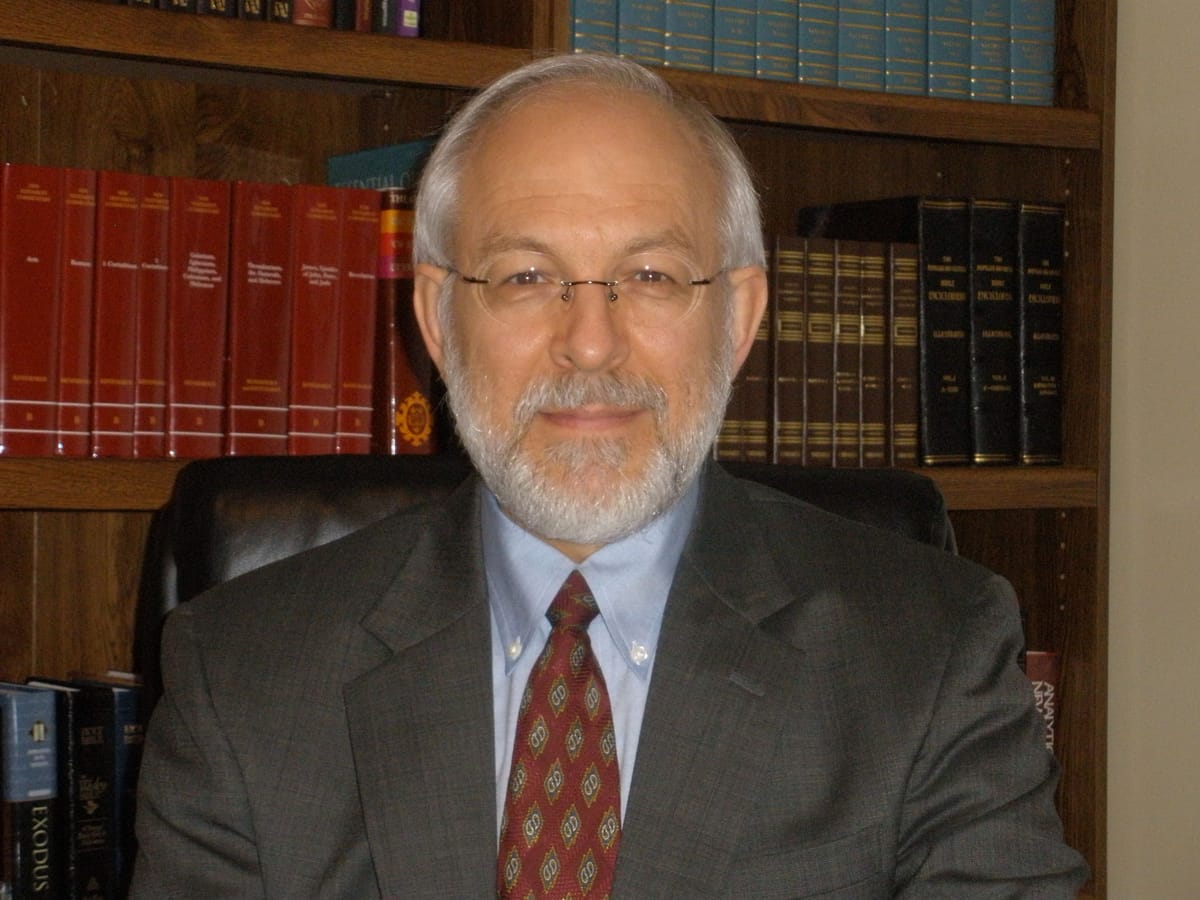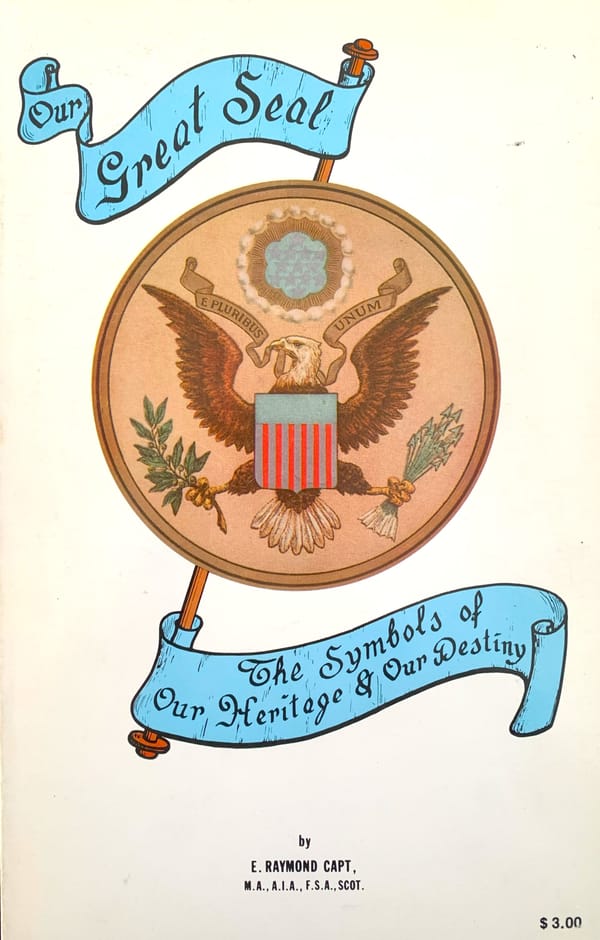Our presentation of the short booklet by the 20th century British author, Isabel Hill Elder continues below. While we have admiration for Ms. Elder’s scholarship, there are certain points herein with which we must make our disagreement known —or at least our questioning of some of her assertions.
In this blog, all emphases and comments in [brackets] are mine. Unless within my brackets, all words in (parentheses) are presumably by Ms. Elder.
For readers’ convenience, we have spelled out the full names of her biblical references and changed the chapter numbers from Roman numerals to Arabic numerals. We have left the British spellings as is and also split many of her lengthy paragraphs to make them more readable for the screens of some of our modern digital devices. QUOTE:
Our Lord's first act upon His return to Palestine was to seek and obtain baptism at the hands of the great Levite, John Baptist—His long prophesied forerunner. John recognized Jesus as the Messiah but hesitated to perform the rite.
"I have need to be baptized of Thee and comest Thou to me?" (Matthew 3:14). This duty, however, was incumbent upon John as the minister of that dispensation, and so we have our Lord's reply to the protestation of John "Thus it becometh us to fulfil all righteousness" or "every claim of righteous duty." This was the anointing of Messiah and its accompanying washing or immersion. (Exodus 29:4-7).
Afterwards John witnessed the Holy Spirit descending upon Him, and heard a voice saying: "This is my beloved Son", the Divine formula for the office of Prophet (Matthew 3:17), also for that of Priest, "This is my beloved Son"—literally "My Son—the Beloved" and for that of King "Thou art my Son." (Psalm 2:7, 8).
As the Old Covenant was established with the House of Levi, we should expect to find that the New Covenant was also established by means of this sacred House in Israel. A little closer examination, a more intimate knowledge of the historic facts will prove beyond the shadow of doubt that the Levites were the instruments in the hand of Almighty God for the implementing of the New Covenant, and so we find that the twelve disciples called by our Lord soon after His anointing and baptism were all Levites.
[We do not necessarily agree with this assertion by Ms. Elder. If they were all Levites, why were some (a majority of) the apostles fishermen, and not ministering as Levites in and about the temple? This includes the three chief apostles, Peter, James, and John, plus Andrew and others.
All the apostles except Judas were from Galilee, the land of Benjamin. We grant that it is possible that they were Levites living in the land of Benjamin. Then what becomes of the prophecy that the Benjamites would always be a light to the royal tribe of Judah?
Paul, though admittedly not one of the original twelve, was a self-proclaimed Benjamite. Judas Iscariot was (like Herod) of mixed ancestry; half Edomite and half-what? Half-Judahite? or as Ms. Elder would argue, half-Levite? Or would she say, he was full Levite?
Iscariot is from the words “Ish Kerioth” meaning “man from Kerioth,” which was the land predominantly inhabited by the Edomites who had been forcibly converted to the religion of the Jews a century before Christ. We have more to debate her assertion, but we shall not take the time or space to contest it here. ]
This is clearly brought out towards the end of Matthew 13:1-52 where our Lord instructed His disciples and the people by means of seven parables (called by Him the mysteries of the kingdom of heaven). Afterwards when He asked His disciples "Have ye understood all these things" they replied "Yea, Lord."
Then He addressed them as scribes (all scribes were Levites). "Therefore, every scribe who is instructed unto the kingdom of God is like unto a householder who brings out of his treasure things new and old." The original has "every scribe who has been made a disciple" (likewise Ferrar Fenton translation).
The scribe was an expert in the law of the Old Covenant which was indeed his treasure, but now, our Lord told his Levite disciples that as a result of His instruction concerning the New Covenant, they were in a position to bring forth things both new and old from their treasure.
In the course of their training as disciples, our Lord sent forth these chosen scribes to preach the gospel of the Kingdom. It was as Levites they were given the order of their procedure, for the equipment which they were forbidden to take on their journey was that of an itinerant or travelling Levite; even the important scrip or bag which the Levite carried to collect money for the Temple treasury, was to be left behind.
In this preaching journey their faith was tested to the utmost; utter dependence on their Heavenly Father to supply every need was the lesson their Master would have them learn. Immediately upon their return their faith was put to the test in the feeding of the multitude who had followed Jesus to "a desert place when He said to them "Give ye them to eat." (Mark 6:30-44).
Following this mission of the chosen twelve our Lord sent forth another seventy disciples, also Levites, because their orders, and equipment to be left behind, were precisely that of the twelve. These returned rejoicing for the success of their mission. (Luke 10:20).
The Scribes were a most important body in the Levitical hierarchy, and no Sanhedrin business could proceed without them; they seem to have had authority equal to that of the priests and were required to be present when important decisions were taken.
In the recorded sayings of our Lord to His disciples, on two occasions, He assures them "Ye shall sit on twelve thrones judging the twelve tribes of Israel." As Levites this was one of their age-long functions—the office of judge in Israel.
In the days of King David "Twenty-four thousand Levites were engaged in the sacrificial and other duties of the Tabernacle (and later Temple) and six thousand were ‘officers and judges’ in the country districts. (1 Chronicles 23:4). The disciples, as purified sons of Levi, were, at that time, having their part in establishing the New Covenant, as also their fathers had in establishing the Old Covenant.
As "the gifts and calling of God are without repentance" (or retraction) they were now officially informed by their Master that they, as Levites, would continue to function in the Kingdom of God, in order that the promises to "their fathers" may be perfectly accomplished. Their sacrificial duties and ordinances had now passed away and were replaced by the one sacrifice of Jesus the Christ, which it was their duty as Levites to make known.
The Rulers were Levites, frequently of the House of Aaron who had passed the age for service at the Altar, and were chosen for this position of dignity, principally for their gravity of demeanour and their wealth.
The Levitical priesthood, soon now to be set aside for ever, had become more and more corrupt. Chief Priests, Priests, Scribes and Rulers were the subject of frequent denunciation by our Lord. His estimate of them is clearly proved in the parable of the Good Samaritan (Luke 10:30-36) with which our Lord illustrated his reply to the young lawyer (who was of course a Levite) "Who is my neighbour?"
Both priest and Levite, ignoring the plight of the traveller who had fallen among thieves, "passed by on the other side", and it was left to the Samaritan, the non-Israelite, to shew the mercy which should have come at once, as a matter of course, from these ministers of religion.
Throughout our Lord's ministry the Priests, Scribes and Rulers were continually plotting His destruction, an attitude which increased steadily until at last He was arrested and condemned to be crucified.
All the evidence of the Scriptures goes to prove that the Chief Priests, Rulers, Scribes and others of the Levitical hierarchy were responsible for the tragedy of the Crucifixion, and not the Jews who in their age-long reverence for, and obedience to, the priests did as they were "persuaded" in demanding the death of Jesus, the Christ.
This stigma has adhered to the Jews for close on two thousand years. As the preaching of the Cross and Christianity began to be superimposed upon the pagan religion of Rome it was difficult for the priests of this hybrid system of worship to tell their converts that it was the priestly rulers in Jerusalem who were responsible for the Cross, and they allowed the Jews to take the blame.
It was after the "Chief priests and rulers" had "persuaded" the multitude that they uttered the fateful words, "His blood be upon us and on our children," an outstanding instance of mass hysteria, while their governing body in cold blood and calculated cruelty carried through their preconceived plan and "denied the Holy One and the Just . . and killed the Prince of life."
The statement of Luke 19:47-48, reads "And He taught daily in the Temple, but the chief priests and the scribes and the chief of the people (rulers) sought to destroy Him. And could not find what they might do; for all the people were very attentive to hear Him" or "hung on His words", implying deep interest and admiration.
"Then assembled together the chief priests and scribes and the elders or rulers ... and consulted that they might take Jesus by subtlety and kill Him. But they said "Not on the feast day lest there be an uproar among the people." (Matthew 26:3-5). The sign of Levi is scales (Zodiacal). "They weighed the price of Christ's blood." (Zechariah 11:12; Matthew 26:14-16).
"Then one of the twelve, called Judas Iscariot, went unto the chief priests. And said unto them, "What will ye give me and I will deliver him unto you? And they covenanted with him for thirty pieces of silver."
At His trial, which was illegal, because carried through during the night, the chief priests successfully "persuaded the multitude" to ask for the release of Barabbas rather than Jesus. Pilate, therefore, finding it in vain to struggle with the prejudices of the Levitical hierarchy, called for water and washed his hands before the multitude crying, at the same time, that the prisoner had no fault, and that he himself was innocent of His blood.
The Mosaic law was in this way carried out, even to the pronouncing as perfect, without blemish, spotless, the sacrificial Lamb of God. (Deuteronomy 21:6, 7; Psalm 26).
At the trial of our Lord, Pilate, the Governor of Judea, sought to release Him. The sacrificial lamb must be without blemish and only a priest of the Levitical Order could examine and make this pronouncement before sacrifice.
Now Pilate was a Spaniard, no doubt descended from those of the tribe of Levi who, with many of Judah, sought refuge, and settled in Spain in the days of Nebuchadnezzar. They have been known as the Sephardim Jews of Spain and have always been looked upon as the very "cream of the Jews" which supports the tradition that many were of the House of David. There is a very considerable literature concerning them; one writer, Don Adolfo de Castro, in his work entitled "The Jews of Spain" treats of the history of these Israelites at some length.
According to the Cochin Jewish History, Nebuchadnezzar, from before Tyre, sent a fleet and army along the Phoenician settlements in Africa to Spain, under the command of one of his generals, an Ionian prince, named Phyrrus. With this expedition he embarked with their own consent, not as captives, but as emigrants, a large body of Jews and Israelites of the tribes of Judah and Benjamin, of Simeon and the Levites (quoted by Rev. Charles Forster, B.A., in "The Monuments of Assyria, Babylonia and Persia", 1859).
The circumstantial evidence of Pilate, the Spaniard, having his descent from one of these Levite families living in Spain, brings the probability into the realm of the factual, and throws a flood of light on Pilate's actions during the trial of our Lord.
Pilate was of a noble family, and Julius Caesar states that the nobility of Spain and Gaul sent their youth to be educated at Druidic seats of learning in Britain (Comm. Lib. 5). Dr. O. Kinnaman, the archaeologist, in his work "Diggers for Facts" tells us that after a course of study in Britain, Pilate while studying law in Rome, met and married Claudia, daughter of Julia, who by a third marriage became the wife of the Emperor Tiberius.
In the year 26 A.D. Tiberius appointed Pontius Pilate Governor of Judea. Claudia, after much opposition, won the consent of her step-father Tiberius to accompany her husband; she became the first woman in Roman history to accompany her husband on his foreign service.
This writer states that "Pilate had somewhat the character of the Oriental rather than that of the Spaniard" for by his pronouncement and action Pilate actually declared himself the descendant of a Levite (although for many centuries past the family may have severed their connection with that sacrosanct body).
Pilate complied with the law of Moses which orders that in the case of unknown murder, the elders of the nearest city must wash their hands publicly, and say "Our hands have not shed this blood." (Deuteronomy 21:2-6), and in allusion to this law the Psalmist declares "I will wash my hands in innocency."
[What a coincidence! We had just expounded on that law in our January lecture, which went out to our CD Ministry about a week ago. That lecture is called The Laws of Murder, Manslaughter and Sanctuary Cities, part 3. It (CD #752) is a 62-minute lecture and is available from us for $15 postpaid.]
Therefore, according to the Israel rites which only a conscious (though perhaps secret) Levite could use, Pilate, strengthened by the urgent message from his wife, "Have thou nothing to do with that just person." (Matthew 27:19) declared the innocence of Jesus of Nazareth, the Redeemer of Israel, and his own resolution to have no hand in His death. This Mosaic law was instituted in the first instance to impress all around with the preciousness of life—treated with so much indifference by Eastern nations. END QUOTE
(To be continued.)
END



